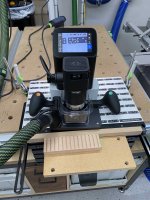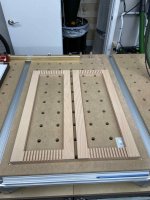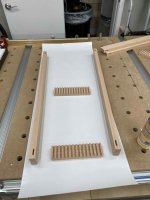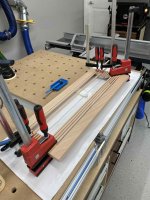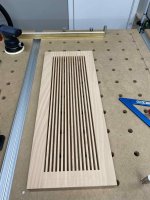I like the design a lot, but I think it's going to be hard to predict success using solid wood.
[member=60789]mkasdin[/member] is probably right that quartersawn stock would be less prone to moving. I think milling it down in stages might also help to identify the most unruly pieces.
I don't know how long the time was between the ripping of the slats and installation, but I've seen some woods move a lot after being ripped. I have some flame birch which was destined for one thing, but after ripping it bent about 1/8". Perhaps selecting for grain, ripping oversized, letting it sit, then milling down a little more once or twice, might lead to less unpredictable materials.

